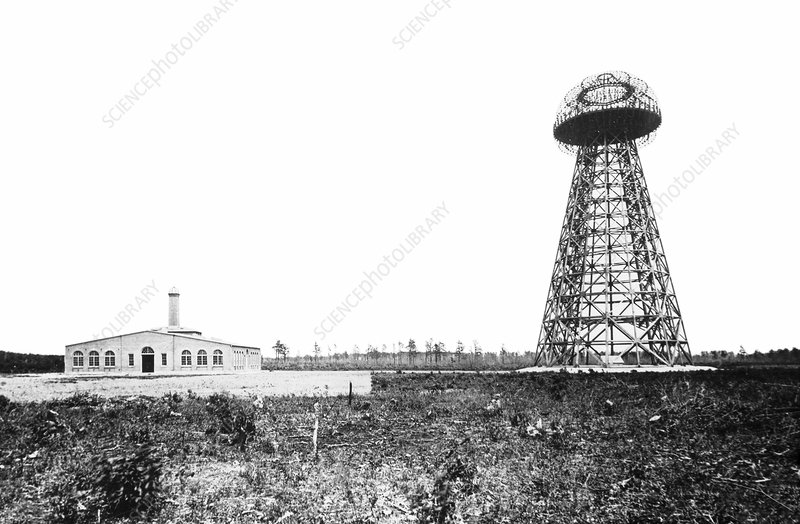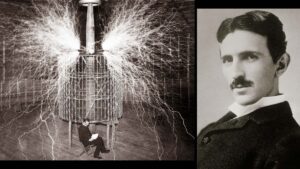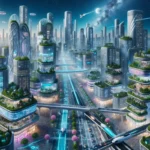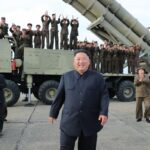Nikola Tesla was one of the most brilliant and eccentric inventors of the modern era, a man whose ideas laid the groundwork for many of the technologies we take for granted today. Born on July 10, 1856, in Smiljan, which was then part of the Austro-Hungarian Empire (modern-day Croatia), Tesla was a Serbian-American inventor, electrical engineer, mechanical engineer, and futurist best known for his contributions to the development of alternating current (AC) electrical systems. Over the course of his life, Tesla would earn over 300 patents and influence fields ranging from wireless communication and radio to robotics and renewable energy.
Early Life and Education
Tesla’s fascination with electricity began early. His mother, who was an inventor of household tools, likely inspired his creativity. Tesla’s father was a Serbian Orthodox priest and a writer who wanted Nikola to follow in his footsteps. However, Tesla was drawn to engineering and went on to study at the Technical University at Graz, Austria, and later at the University of Prague. Though he never graduated, Tesla displayed an exceptional memory and a gift for visualizing complex machinery in his mind without needing to draw blueprints—a technique known as “mental visualization” that he used throughout his life.
AC Power and the War of Currents
Tesla’s most significant contribution was his development of the alternating current (AC) electrical system. In the late 19th century, electricity was an emerging field dominated by Thomas Edison, who promoted direct current (DC). DC had limitations: it could not be transmitted over long distances without significant power loss. Tesla, by contrast, advocated for AC, which could be easily transformed to different voltages and transmitted efficiently over great distances.
In 1884, Tesla moved to the United States and briefly worked for Edison, but the two men had conflicting visions and eventually parted ways. Tesla soon found an ally in industrialist George Westinghouse, who purchased Tesla’s AC patents and hired him to help develop a power system. The partnership proved pivotal in the so-called “War of Currents” between Edison’s DC system and Tesla’s AC model.
The conflict culminated at the 1893 World’s Columbian Exposition in Chicago, where Westinghouse and Tesla showcased their AC system by lighting the entire fairgrounds, proving its safety and efficiency. AC power later triumphed definitively when it was used to harness energy from Niagara Falls, one of the first large-scale hydroelectric power plants. This marked the dawn of widespread electricity use and cemented Tesla’s role in shaping the electrical age.
Radio and Wireless Transmission
Though often overshadowed by Guglielmo Marconi in the popular narrative, Tesla was a pioneer in radio technology. In fact, he demonstrated the principles of radio transmission as early as 1893 and filed key patents related to radio waves before Marconi. In 1943, months after Tesla’s death, the U.S. Supreme Court recognized Tesla’s patents as fundamental to the invention of radio, restoring his legacy.

Tesla’s work in wireless energy transmission went even further. At his Colorado Springs laboratory in 1899, he conducted experiments with high-voltage, high-frequency electricity and built massive Tesla coils, some generating millions of volts. He claimed to have transmitted wireless energy through the earth and air, and even envisioned a global wireless communication system. To bring this dream to life, he began constructing the Wardenclyffe Tower on Long Island in 1901, with the backing of financier J.P. Morgan. However, the project was abandoned due to financial issues and a lack of support, leading to one of Tesla’s greatest personal and professional setbacks.
Other Inventions and Ideas
Tesla’s genius was not limited to electricity and radio. He developed a wide array of devices and concepts, some of which were ahead of their time. Among them:
- The Tesla Coil: Used in radio technology and high-voltage experiments, it became iconic in scientific demonstrations and is still used in physics education and entertainment.
- The Induction Motor: A revolutionary type of motor powered by AC, which became a foundation for many modern appliances and industrial machines.
- Remote Control: In 1898, Tesla demonstrated a radio-controlled boat, one of the earliest examples of remote-control technology.
- Fluorescent and Neon Lighting: Tesla experimented with alternative lighting systems that were more efficient than the incandescent bulbs of the time.
- X-ray Imaging: Even before Wilhelm Roentgen’s discovery of X-rays, Tesla was conducting experiments with similar electromagnetic radiation.
Later in life, Tesla spoke of more speculative inventions, such as a “death ray” capable of destroying armies, and devices to harness cosmic rays or tap into unlimited energy from the environment. While some of these claims remain unproven or speculative, they contributed to Tesla’s image as a visionary on the edge of science fiction.
Personality and Legacy
Tesla was known for his eccentric personality, obsessive work habits, and a reclusive lifestyle. He never married, citing his dedication to science, and often worked through the night. He was also known for his love of pigeons and his disdain for germs and round objects. These quirks often isolated him, and while he gained fame during the height of his career, he later fell into obscurity and financial hardship.
Despite his setbacks, Tesla’s legacy has undergone a major revival. Today, he is celebrated as a symbol of innovation and visionary thinking. The electric car company Tesla, Inc., founded by Elon Musk and others, was named in his honor. Statues, museums, and documentaries have brought his contributions back into the public eye, and he is widely credited as one of the most important inventors of all time.
Conclusion
Nikola Tesla was not just an inventor but a man who envisioned a future powered by clean, limitless energy and seamless communication across the globe. While many of his ideas were not fully realized in his lifetime, his foundational work in AC power, wireless communication, and electrical engineering shaped the modern technological world. A blend of genius, ambition, and mystery, Tesla’s story continues to inspire scientists, inventors, and dreamers. His life serves as a testament to the power of imagination, and to the challenges that come with pushing the boundaries of what is possible.



